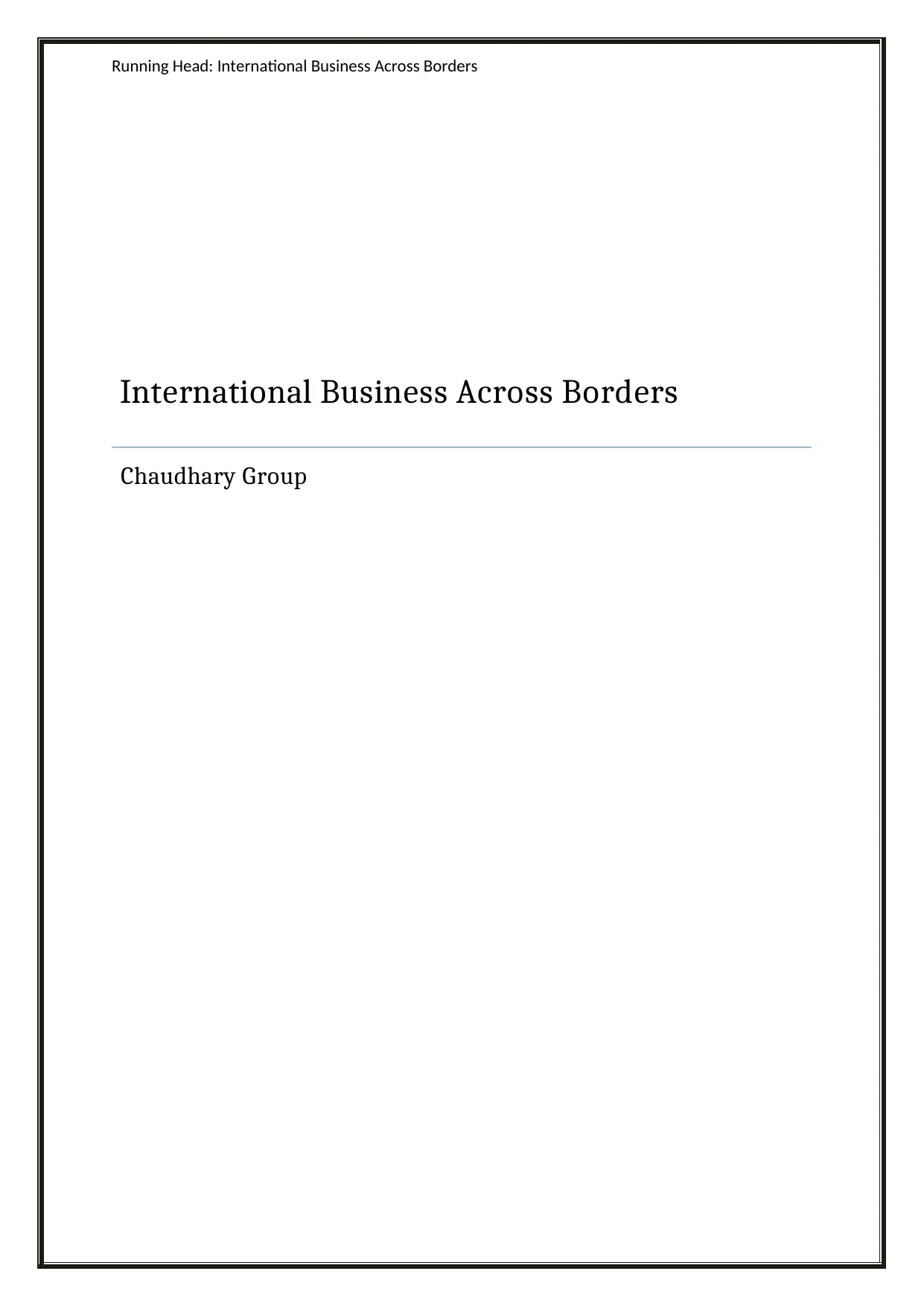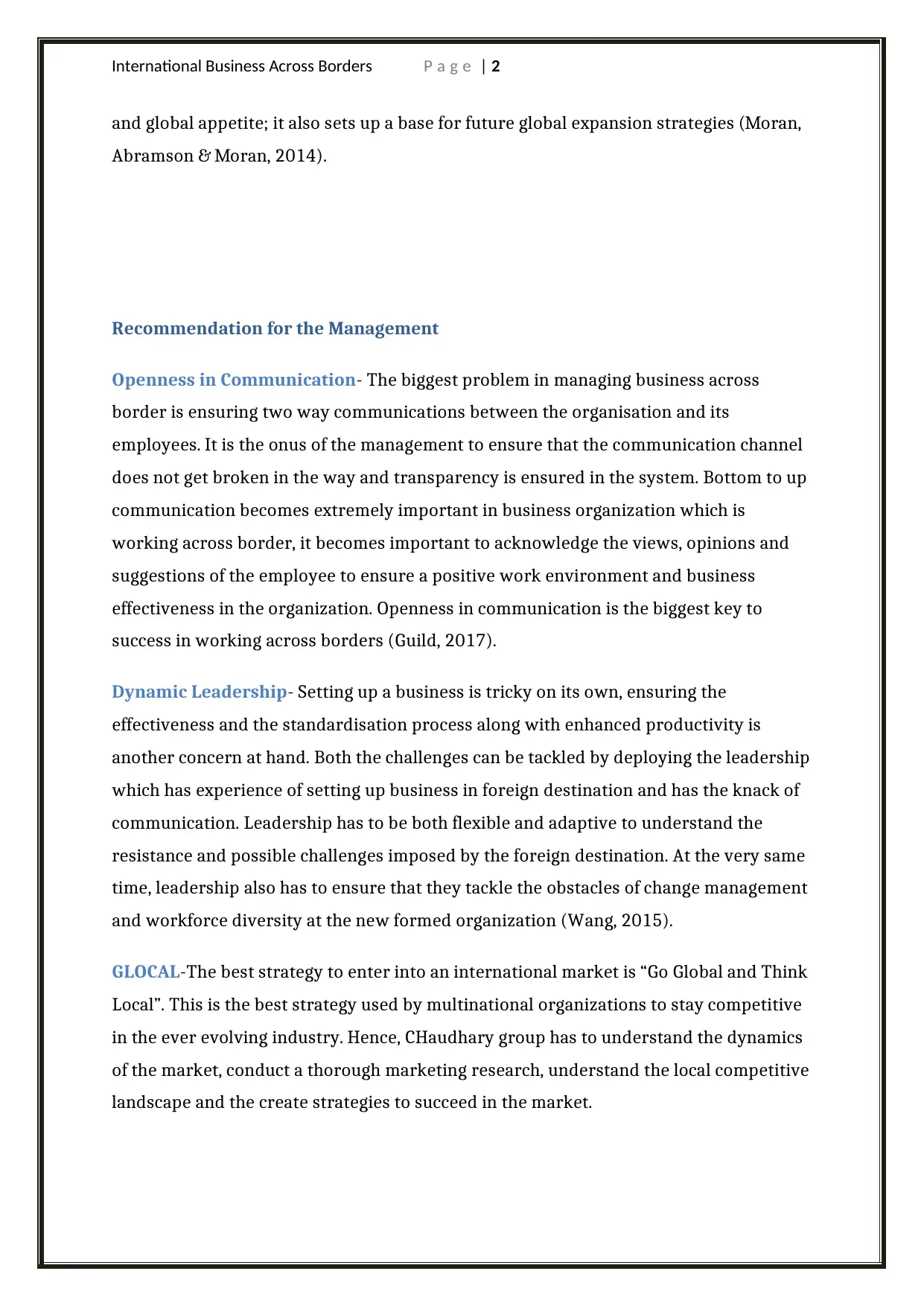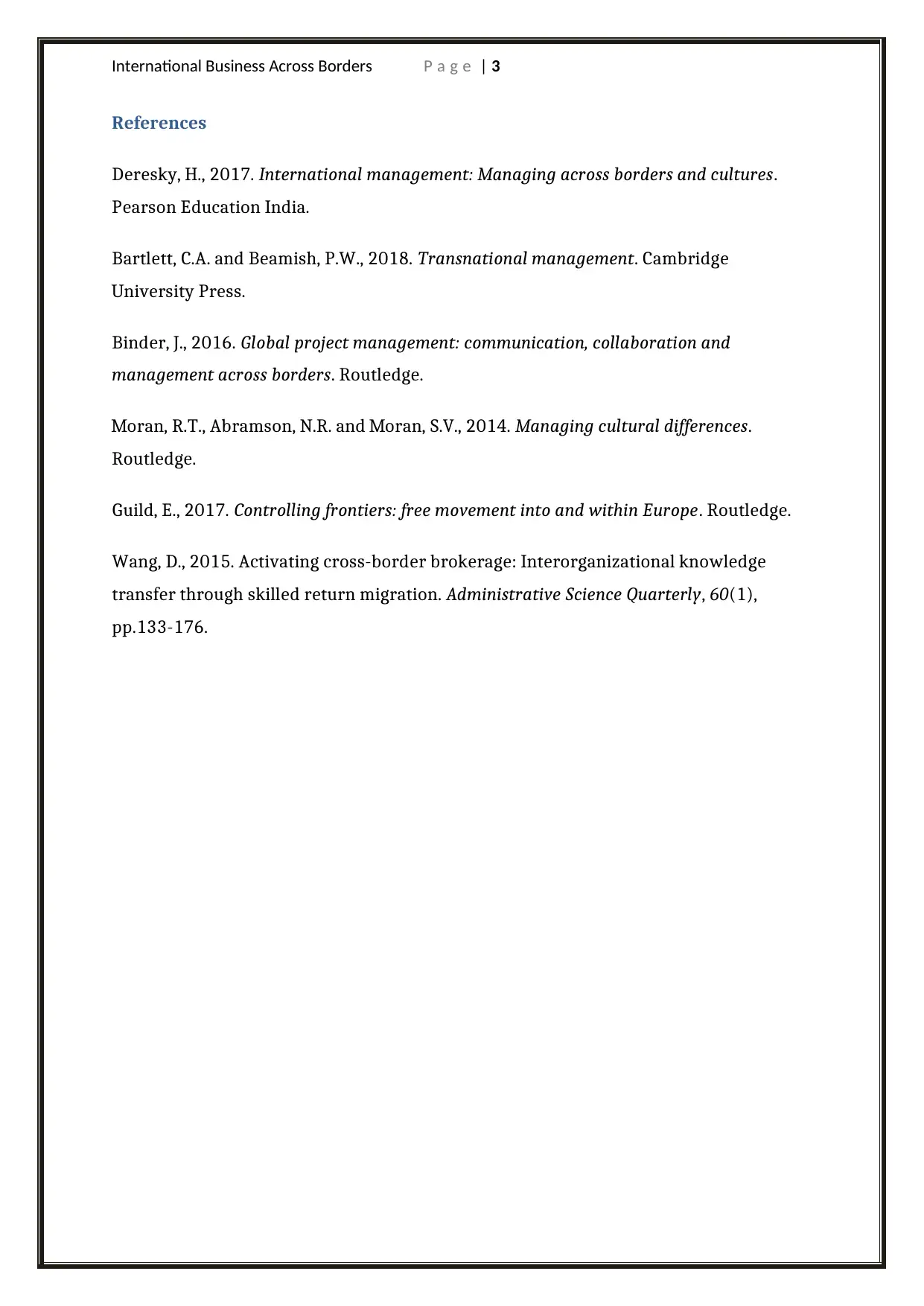International Business: Chaudhary Group's Cross-Border Strategy Report
VerifiedAdded on 2023/06/12
|4
|834
|443
Report
AI Summary
This report provides an analysis of Chaudhary Group's international business strategy, focusing on the key issues and opportunities the company faces when operating across borders. It highlights cultural differences and the importance of standardizing business practices while leveraging workforce diversity and accessing growing markets. The report recommends openness in communication, dynamic leadership, and a 'Glocal' approach to ensure success in international markets. It also addresses the challenges of managing human resources across borders and suggests strategies for effective operational control, production, and supply chain management. The analysis concludes with actionable recommendations aimed at improving Chaudhary Group's international growth strategy and overall performance, offering insights for students studying international business. Desklib provides a platform where students can access similar solved assignments and resources.
1 out of 4










![[object Object]](/_next/static/media/star-bottom.7253800d.svg)